 © Wienerberger
© Wienerberger
Climate Change: Getting Roofs Fit for Heat and Storms
From heat to storms: Climate change means roofs have to withstand increasingly extreme weather conditions. New approaches from wienerberger show how they do it.
 © Wienerberger
© Wienerberger
From heat to storms: Climate change means roofs have to withstand increasingly extreme weather conditions. New approaches from wienerberger show how they do it.
Temperatures in Europe are rising higher and higher: according to the EU climate change service Copernicus, summer 2022 was the hottest since records began. From heatwaves to storms and hail – roofs are exposed to extreme weather events that are becoming more frequent and more intense. wienerberger is tackling the effects of climate change head on and breaking new ground with climate-resilient solutions.
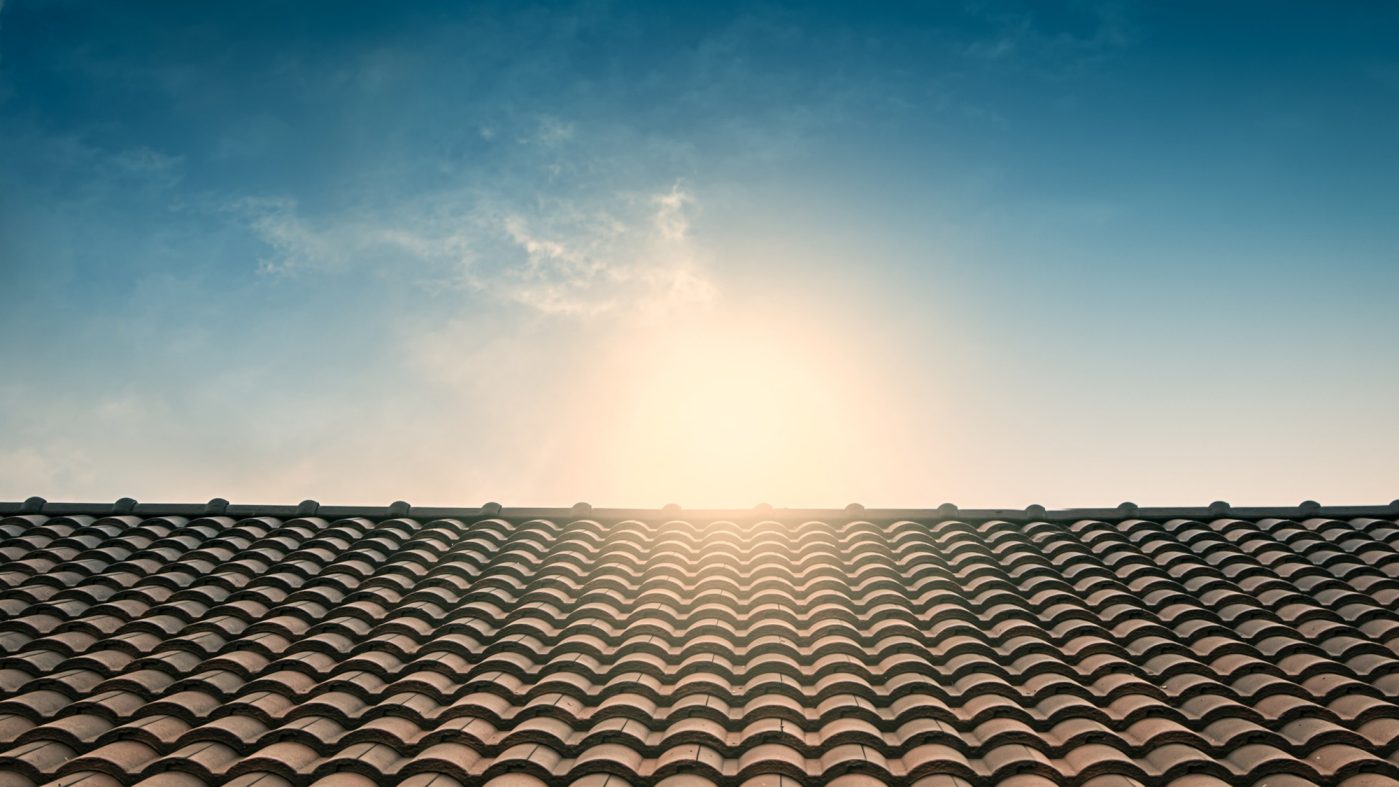 © pingpao/Adobe Stock
© pingpao/Adobe Stock
The effects of climate change: roof systems increasingly have to withstand intense heat.
According to the Intergovernmental Plan on Climate Change IPCC extreme weather is on the increase. This presents the owners of residential and commercial properties with challenges, as they have to adapt their buildings to the changed climate – for example, with climate resilient roof systems. As a leading manufacturer of roof tiles in Europe, wienerberger relies on energy-efficient affordable solutions to combat climate change. “Well-balanced, all-in-one products significantly increase the safety, longevity and ecological performance of roofs”, explains Bernhard Brandtner, International Product Management Roof/Technical Fittings at wienerberger.
Roughly half the energy consumed in the EU is used for heating and cooling buildings, and in industry. Since heat rises, it is essential that roofs are well insulated. According to a report for the European Commission, up to a quarter of heat can be lost through the roof, depending on the type of building and what kind of insulation is in place. wienerberger’s highly-efficient roof-mounted insulation systems prevent heat loss in winter and in summer help avoid overheating, thus significantly reducing the need for heating and cooling energy.
Light-colored surfaces reflect more sunlight and consequently do not heat up so much. “In south and southeastern Europe in particular, we are therefore putting a stronger focus on light-colored roof tiles. They provide a way to minimize the heat inside the building and in the surrounding area. This increases the quality of life and reduces the need for indoor air conditioning”, says Bernhard Brandtner. Overheating in summer is a serious problem, nowhere more than in cities. More here: Sealed Surfaces: Building Climate Resilient Cities.
wienerberger continues to drive the trend toward light-colored designs and in several countries has added white roof tiles to its product range. Roof tiles with white engobe (clay mineral slip for coating or coloring) reflect the most sunlight by far – absorbing less than
a quarter of the sun’s rays. However, red and brown roof tiles also stay cooler than black tiles, which absorb approximately 80 to 85 percent of the light energy and thus heat up more. Glossy tiles generally reflect more sunlight than matt tiles.
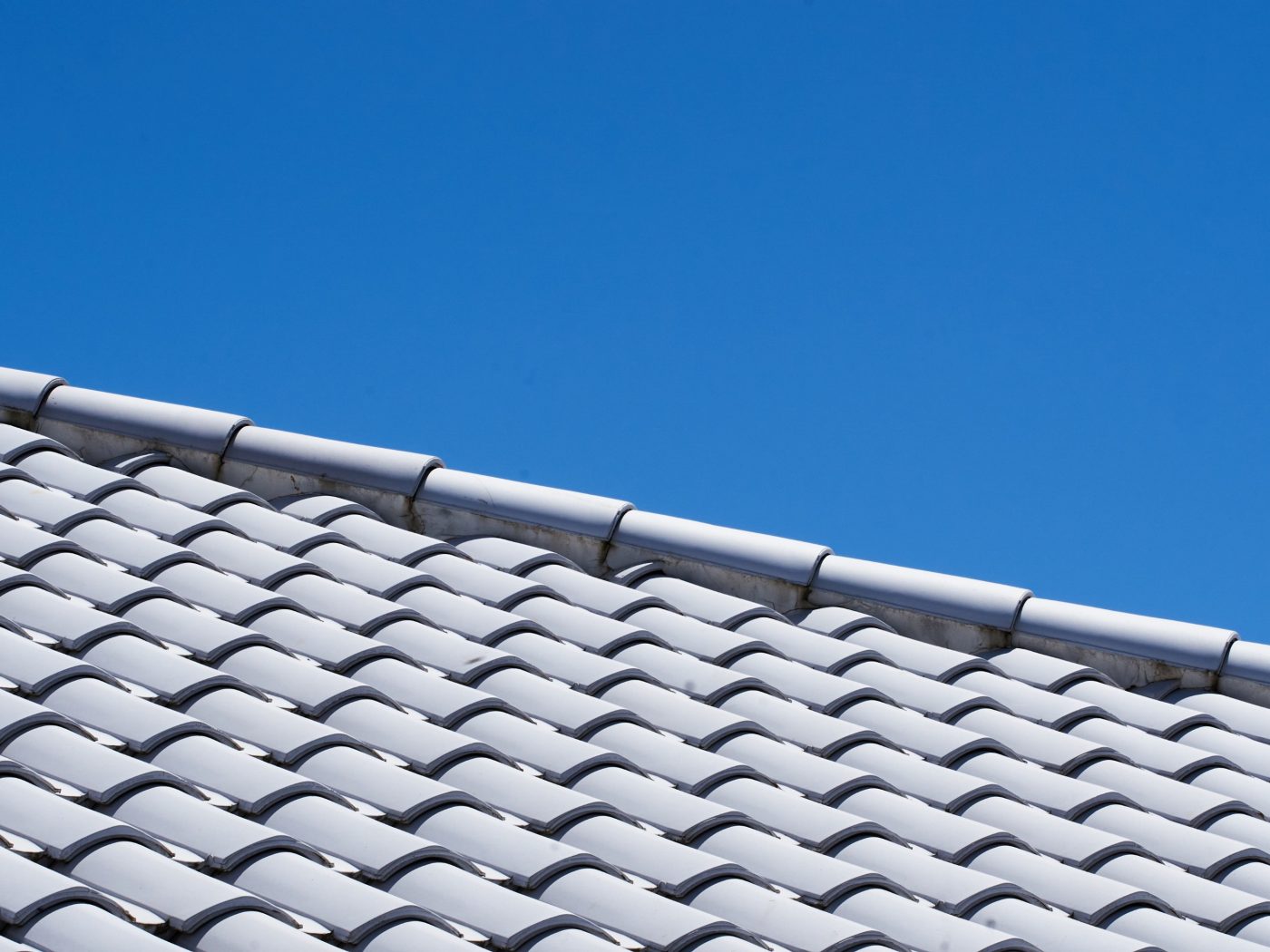
Another step towards adapting to heat is to optimize dark engobes. Since black roof tiles account for the largest share of the market in the roof tile segment, even small improvements have a big impact when added up. Among customers, dark colors such as anthracite are generally very popular. This is why wienerberger is working intensively on coatings that have special infrared-reflecting pigments. These increase solar reflectance while retaining the same color impression.
By adapting engobe recipes wienerberger has already increased the reflectance of shades of black by 5 percent. In the case of Satin Black, this equates to an increase of approximately one third compared to standard products. The results are being evaluated together with external institutes and research facilities. “To drive this development forward and improve our solutions even further, we work closely with other divisions and also external partners. This also boosts the transfer of knowledge,” Bernhard Brandtner says.
“To drive this development forward and improve our solutions even further, we work closely with other divisions and also external partners This also simplifies the transfer of knowledge.”
wienerberger is also breaking new ground in flat roofs. In the European countries in which it operates, the company is the exclusive distributor of the Leadax Roov roofing membrane produced by Dutch manufacturer Leadax. "With the Leadax Roov system, wienerberger can deliver a circular contribution to sustainability in flat roofing“, says Jacco Venema, International Business Development Manager for Flat Roofs at wienerberger. The carbon footprint of the flat-roof membrane is up to 85 percent smaller than that of other solutions on the market as no CO2 emissions are generated during production. In addition, 75 percent of the roof membrane consists of recycled plastic and – in the spirit of the circular economy – once the membrane reaches the end of its service life it can be completely recycled into new flat-roof membranes.
The high solar reflectance of the white Leadax Roov flat-roof membrane offers a number of advantages as the roof membrane heats up far less in the sun compared to traditional dark flat-roof membranes.
Read more about how wienerberger supplies buildings with an innovative solar energy roof system: Solar Roof Tiles: Energy Systems of the Future.
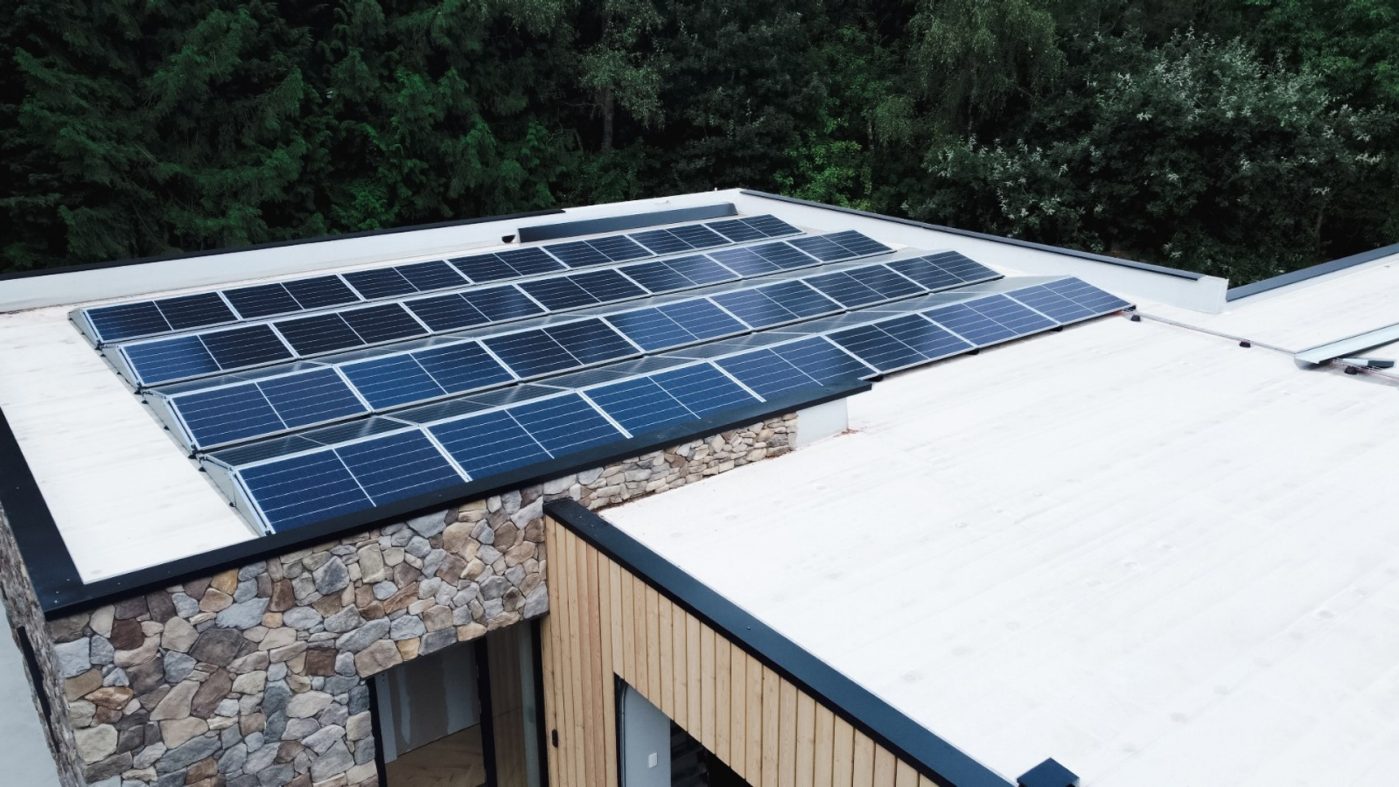 © Wienerberger
© Wienerberger
Using free spaces: wienerberger focuses on photovoltaic solutions adapted to the individual roof – here combined with Leadax Roov.
In general, roofs are taking on a wider range of functions, for example with the help of vegetation. Green roofs promote biodiversity, good air quality and make an aesthetic statement. In summer, carefully planned green roofs provide protection from the heat and in winter act as an additional layer of thermal insulation. When combined with smart solutions like the rainwater management system Raineo® from Pipelife, water can be collected, filtered, stored and reused, for example for irrigation purposes, or left to seep away. Read more on new solutions in European cities here: From Heat Islands to Green Islands: Transforming Modern Cities in the Face of Climate Change
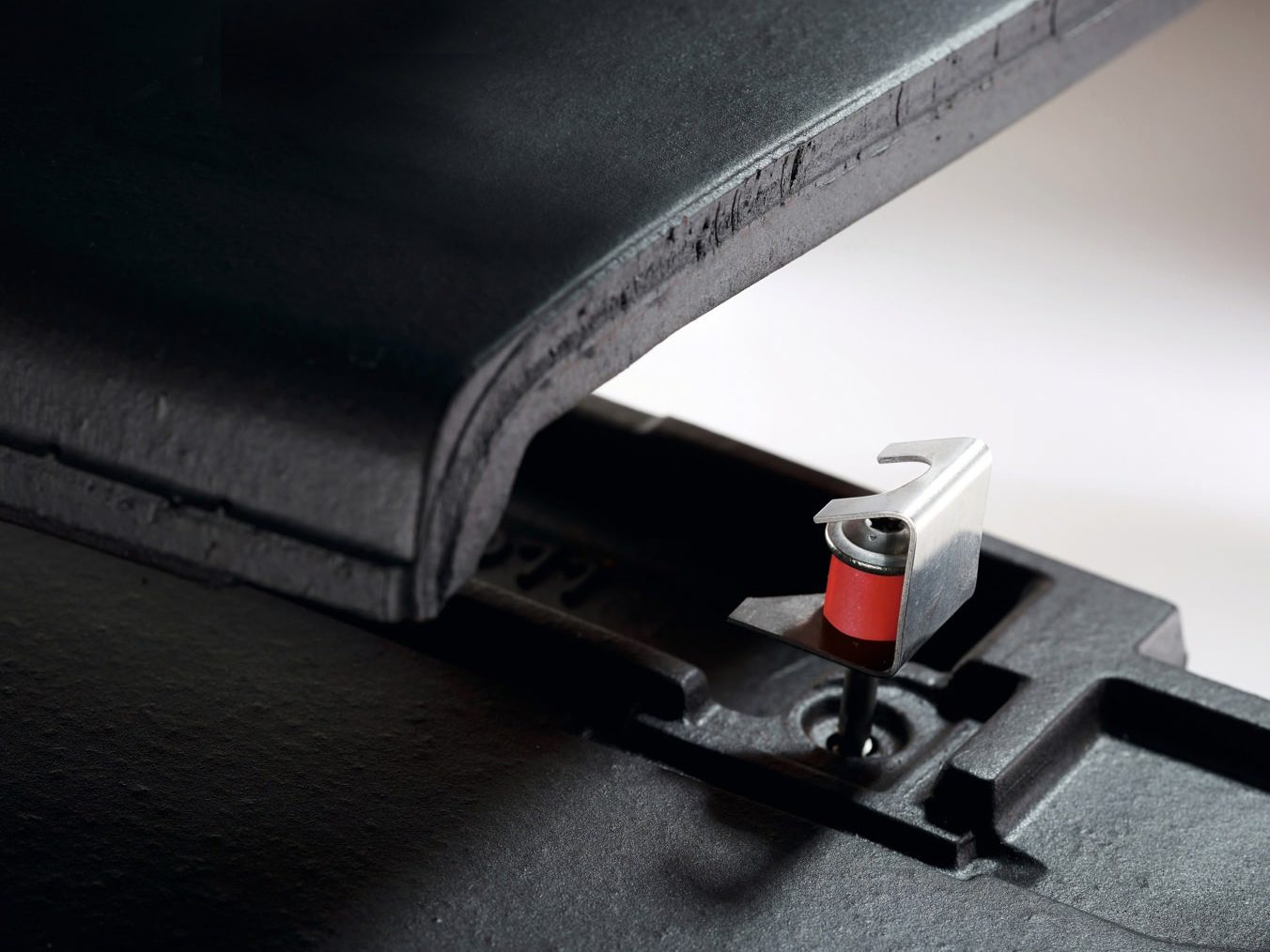
For roof coverings to have a long service life and thus conserve resources, they must be able to withstand the elements. Roofing systems from wienerberger such as the Sturmfix 2.0 wind protection system are made to resist fierce storms. The solution, which is designed to be used with the company’s tile range, secures up to five roof tiles at a time. It prevents damage to the building or from falling roof tiles and can be easily dismantled if necessary. The roof systems from wienerberger also meet the highest requirements when it comes to hail.
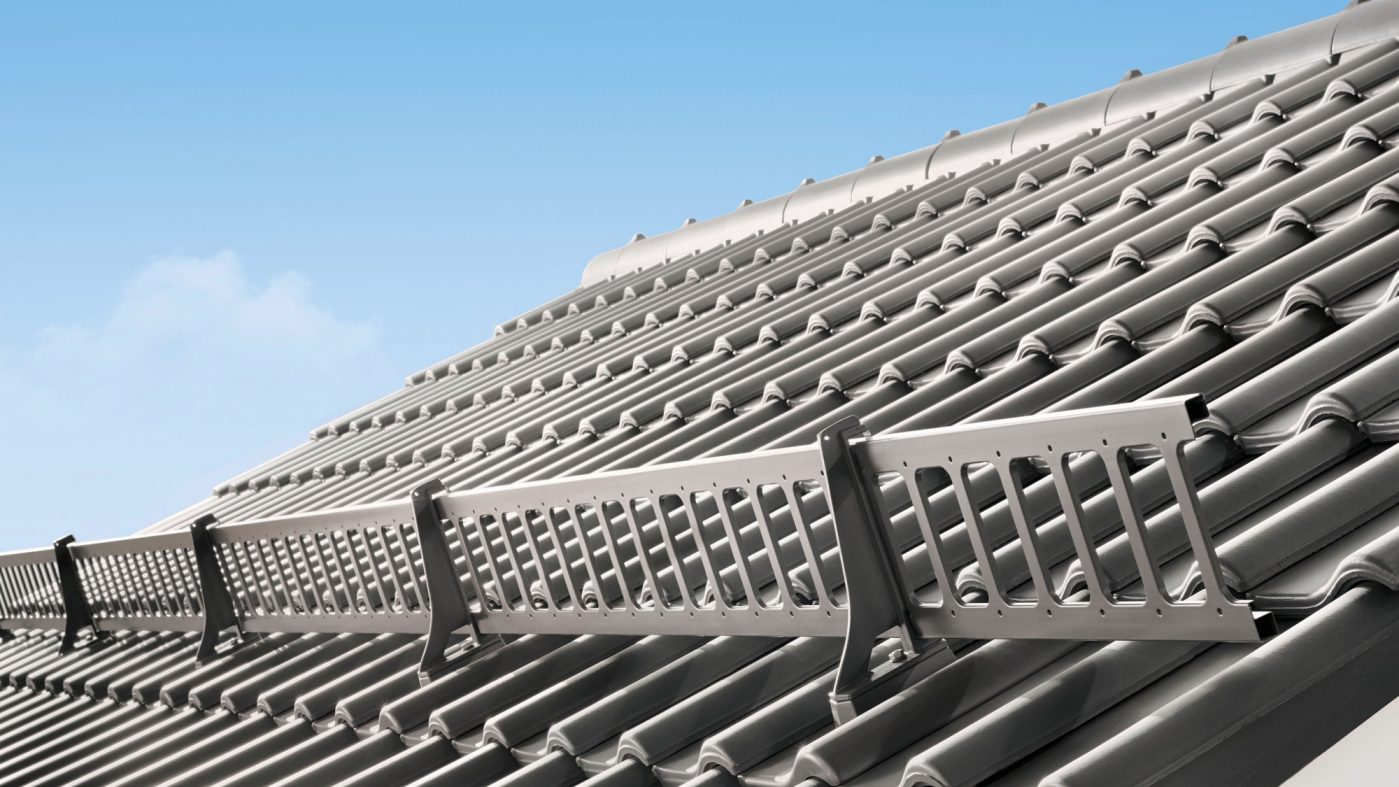 © Wienerberger GmbH
© Wienerberger GmbH
For areas with increased snowfall, particularly in the alpine regions of Central Europe, wienerberger has developed a snow guard and snow retention system. This ensures that the weight of the snow is distributed evenly and as a rule helps prevent snow from suddenly falling off the roof in an avalanche.
From extreme temperatures to storms or heavy precipitation: wienerberger offers innovative solutions for building roofs that are adapted to the effects of climate change. The circular economy is also important: Even during production every effort is made to minimize environmental impact. And the same is true along the entire value creation chain and through the product lifecycle.